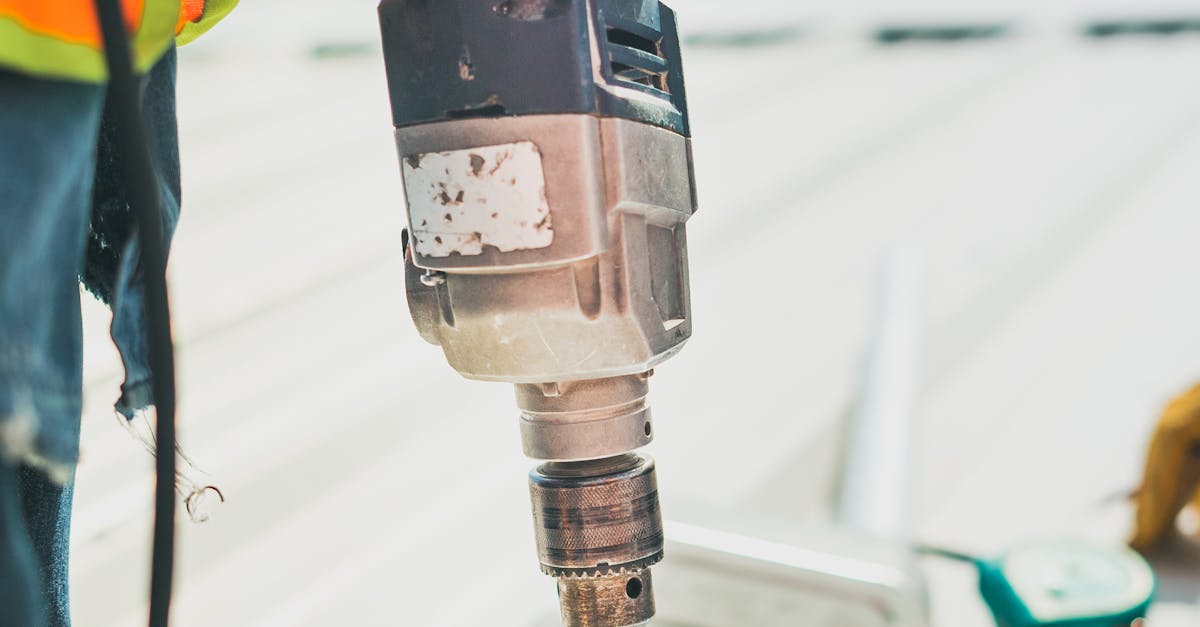The Benefits of Regular Safety Inspections for Homeowners

Table Of Contents
Protecting Family Health
Regular safety inspections in the home play a crucial role in safeguarding the health of family members. These assessments help identify potential hazards that may compromise indoor air quality or expose occupants to harmful substances. For instance, mould growth can lead to respiratory issues, while carbon monoxide leaks pose serious health risks. By addressing these dangers through consistent inspections, homeowners can create a safer living environment.
Moreover, safety checks also ensure that home systems like heating and plumbing are functioning correctly. Faulty equipment can lead to unsafe conditions, such as gas leaks or water contamination. An effective inspection programme can help detect and rectify these problems before they escalate into larger health concerns. By prioritising safety, families can enjoy peace of mind knowing they have taken proactive measures to protect their well-being.
The Importance of Detecting Environmental Risks
Homeowners face a variety of environmental risks that can significantly affect their health and wellbeing. Regular safety inspections provide a valuable opportunity to identify hazards such as mould growth, radon exposure, and lead contaminants. By being proactive, families can address these issues before they escalate, ensuring a safer living environment for everyone. Moreover, awareness of potential risks cultivates a culture of safety, encouraging families to be mindful of their surroundings and take necessary precautions.
Inadequate detection of environmental risks can lead to long-term health consequences, including respiratory problems and other chronic illnesses. Regular assessments enable homeowners to not only spot visible issues but also uncover hidden dangers that may not be immediately apparent. Engaging professionals to conduct thorough inspections is a worthwhile investment, as it contributes directly to the overall safety of the home and protects the health of its occupants over time.
Reducing Insurance Premiums
Homeowners often find that conducting regular safety inspections can lead to lower insurance premiums. Insurers frequently view properties with a strong safety record as lower risk. When safety measures are verified, such as smoke detectors, secure locks, and proper electrical systems, homeowners may be eligible for discounts.
These inspections not only enhance a home's safety but can also uncover areas where improvements are needed. Addressing issues before they become major problems reduces the likelihood of filing claims. A proactive approach is beneficial not only for the homeowner’s peace of mind but also makes the property more attractive to insurance companies, potentially leading to further savings.
The Financial Benefits of Regular Safety Checks
Regular safety inspections can lead to significant financial savings for homeowners. By identifying potential issues early, such as faulty wiring or leaks, costly repairs can be avoided. Addressing these problems before they escalate not only preserves the home’s value but also minimises unexpected expenses that can strain a household budget.
Additionally, many insurance companies offer premium discounts for homes that undergo routine safety checks. These inspections demonstrate a proactive approach to home maintenance, which insurers often recognise with lower rates. Homeowners can enjoy a dual benefit of enhanced safety and reduced insurance costs, making regular safety inspections a wise financial decision.
Fortifying Home Security
Regular safety inspections play a vital role in enhancing home security. Homeowners can identify potential weaknesses and vulnerabilities that may be exploited by intruders. By thoroughly examining entry points such as doors, windows, and garages, they can ensure that all locks are functional and robust. A comprehensive evaluation also includes assessing outdoor lighting and alarm systems, which can deter unwanted visitors and create a safer environment.
Implementing changes based on inspection findings can significantly boost a home’s defence. This proactive approach not only increases security but also provides peace of mind for families. When homeowners take these preventative measures, they can avoid future expenses related to theft or damage. Investing time in regular inspections ultimately cultivates a sense of safety, allowing families to enjoy their living spaces without unnecessary worry.
Identifying Weaknesses in Home Defence
Home security is essential for protecting your loved ones and belongings. Regular safety inspections help identify vulnerabilities in a home’s defence system, such as outdated locks or inadequate lighting around entry points. Evaluating the structure for potential weak spots is a proactive measure that can deter criminals and enhance overall safety.
Assessing the home’s perimeter is equally important. This includes checking fences for gaps and ensuring windows are secure. By pinpointing these weaknesses, homeowners can take corrective actions to fortify their property. Implementing a few strategic changes may not only provide peace of mind but also significantly reduce the risk of break-ins.
FAQS
What are regular safety inspections?
Regular safety inspections are systematic evaluations of a home to identify potential hazards, environmental risks, and security weaknesses that could affect the health and safety of the occupants.
How do regular safety inspections protect family health?
They help detect environmental risks such as mould, lead paint, or gas leaks, ensuring a healthier living environment for your family.
Can regular safety inspections help reduce insurance premiums?
Yes, many insurance companies offer lower premiums to homeowners who conduct regular safety inspections, as it demonstrates a commitment to maintaining the property and reducing risks.
How often should homeowners conduct safety inspections?
It is generally recommended to conduct safety inspections at least once a year, although more frequent checks may be warranted depending on the age of the home and local conditions.
What should I look for during a safety inspection?
Homeowners should check for signs of structural damage, potential fire hazards, environmental toxins, and any weaknesses in home security systems.
Related Links
Key Components of a Comprehensive Electrical Safety InspectionCommon Electrical Hazards Found During Safety Inspections
Preventing Electrical Fires Through Routine Safety Inspections
How to Interpret the Results of Your Safety Inspection Report
Legal Requirements for Electrical Safety Compliance in New South Wales